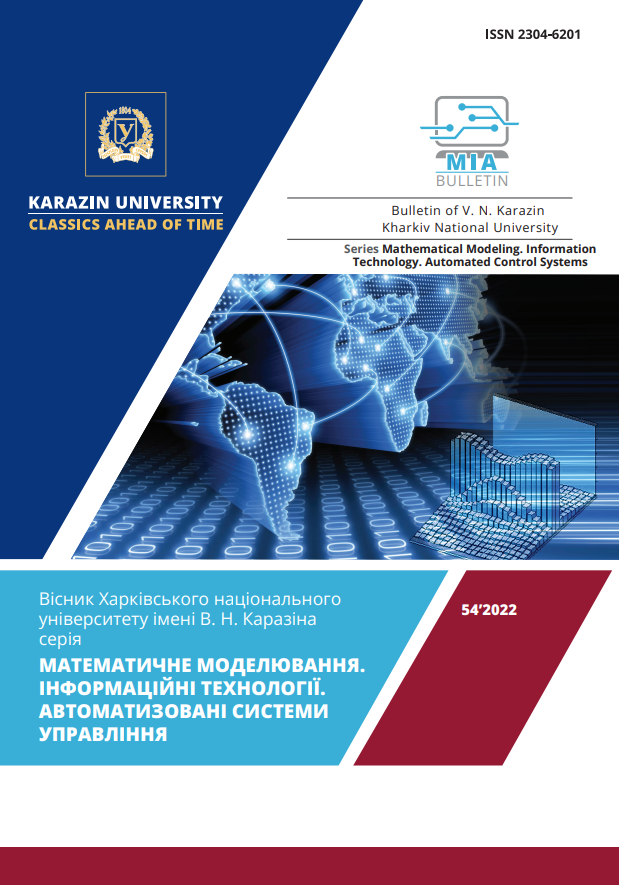Дослідження динаміки чотирьох хвиль covid-19 в країнах Європи
Анотація
Розглядаються особливості динаміки послідовних хвиль пандемії covid-19 в Україні та інших країнах Європи методами дослідження часових рядів. Для отриманих з відкритих джерел кривих щоденних нових випадків захворілих I(t), померлих D(t) і одужалих R(t) були виділені осереднені і осцилюючі складові. Аналіз спектру показав наявність у всіх країн головної гармоніки з періодом Т=7 діб, яка пов’язана з особливостями тижневої роботи медичних і статистичних закладів. В ряді країн виявлені ознаки хаотичної динаміки у вигляді значних амплітуд сусідніх гармонік та значних неочікуваних змін фазових зсувів між ними. Отримані статистично достовірні експоненціальні наближення кривих I(t), D(t) на стадіях швидкого і повільного зростання і швидкого і повільного зменшення числа випадків для кожної з чотирьох хвиль covid-19 в країнах Європи. Ці наближення були використані для валідації математичної моделі SEIRS розповсюдження епідемії в даній країні. Отримані специфічні для країни моделі у вигляді систем звичайних диференціальних рівнянь можуть бути використані для більш детального дослідження динаміки кожної з хвиль та прогнозування подальшої динаміки covid-19 в країні.
Завантаження
Посилання
/Посилання
N. Bacaër, A Short History of Mathematical Population Dynamics. Springer-Verlag, London. 2011. 160c.
D. Aldila, S.H.A. Khoshnaw, E. Safitri, et al. “A mathematical study on the spread of COVID-19 considering social distancing and rapid assessment: The case of Jakarta, Indonesia”, Chaos, Solitons and Fractals. 2020. Vol. 139, 110042. https://doi.org/10.1016/j.chaos.2020.110042
X. Duan, X. Zhang., “ARIMA modelling and forecasting of irregularly patterned COVID-19 outbreaks using Japanese and South Korean data”, Data in Brief. 2020. Vol. 31, 105779. htpps://doi.org/10.1016/j.dib.2020.105779
Q. Li, X. Guan, P. Wu, et al. “Early transmission dynamics in Wuhan, China, of novel coronavirus–infected pneumonia”, New England Journal of Medicine, 2020. Vol. 382, 1199-1207. htpps://doi.org/ 10.1056/NEJMoa2001316
M. Asadi-Zeydabadi, M. Buscema, W. Lodwick, et al. “Analysis of COVID-19 pandemic in USA, using Topological Weighted Centroid”, Computers in Biology and Medicine. 2021. Vol. 136, 104670. htpps://doi.org/ 10.1016/j.compbiomed.2021.104670
J. Sun, “Forecasting COVID-19 pandemic in Alberta, Canada using modifiedARIMA model”, Computer Methods and Programs in Biomedicine. 2021. Vol. 22, 100029. https://doi.org/10.1016/j.cmpbup.2021.100029
N. James, M. Menzies, “Trends in COVID-19 prevalence and mortality: A year in review”, Physica D. 2021. Vol. 425, 132968. https://doi.org/10.1016/j.physd.2021.132968
A. Zakharova, N. Kizilova, “Study on correlations of disease dynamics on COVID-19 with some socio-economic factors”, Bulletin of Kharkiv National University, series "Mathematical modeling. Information Technology. Automated control systems", 2020, Vol. 47, P.49-56. https://doi.org/10.26565/2304-6201-2020-48-04
V. Kostetzka, N. Kizilova, “ Mathematical modeling of the dynamics of the COVID-19 pandemic”, Bulletin of Kharkiv National University, series "Mathematical modeling. Information Technology. Automated control systems", 2020, Vol. 48, P.65-71. https://doi.org/10.26565/2304-6201-2020-48-06
M. Kermark, A. Mckendrick, “Contributions to the mathematical theory of epidemics”, Proceedings of the Royal Society London, 1927, v.115(5), P.700–721. https://doi.org/10.1098/rspa.1927.0118
Computational Modeling and Data Analysis in COVID-19 Research. Ed. by Ch.R.Panigrahi, B. Pati, M. Rath, R. Buyya. CRC Press. 2021.
Bacaër N. A Short History of Mathematical Population Dynamics. Springer-Verlag, London. 2011. 160c.
Aldila D., Khoshnaw S.H.A., Safitri E., et al. A mathematical study on the spread of COVID-19 considering social distancing and rapid assessment: The case of Jakarta, Indonesia. Chaos, Solitons and Fractals. 2020. Vol. 139, 110042. https://doi.org/10.1016/j.chaos.2020.110042
Duan X., Zhang X. ARIMA modelling and forecasting of irregularly patterned COVID-19 outbreaks using Japanese and South Korean data. Data in Brief. 2020. Vol. 31, 105779. htpps://doi.org/10.1016/j.dib.2020.105779
Li Q., Guan X., Wu P., et al. Early transmission dynamics in Wuhan, China, of novel coronavirus–infected pneumonia. New England Journal of Medicine, 2020. Vol. 382, 1199-1207. htpps://doi.org/ 10.1056/NEJMoa2001316
Asadi-Zeydabadi M., Buscema M., Lodwick W., et al. Analysis of COVID-19 pandemic in USA, using Topological Weighted Centroid. Computers in Biology and Medicine. 2021. Vol. 136, 104670. htpps://doi.org/ 10.1016/j.compbiomed.2021.104670
Sun J. Forecasting COVID-19 pandemic in Alberta, Canada using modifiedARIMA model. Computer Methods and Programs in Biomedicine. 2021. Vol. 22, 100029. https://doi.org/10.1016/j.cmpbup.2021.100029
James N., Menzies M. Trends in COVID-19 prevalence and mortality: A year in review. Physica D. 2021. Vol. 425, 132968. https://doi.org/10.1016/j.physd.2021.132968
Захарова А.А., Кізілова Н.М. Дослідження кореляцій динаміки захворювання на COVID-19 з деякими соціально-економічними факторами. Вісник Харківського національного університету серія «Математичне моделювання. Інформаційні технології. Автоматизовані системи управління». 2020. Вип. 47. С.49-56. https://doi.org/10.26565/2304-6201-2020-48-04
Костецька В.В., Кізілова Н.М. Математичне моделювання динаміки пандемії COVID-19. Вісник Харківського національного університету серія «Математичне моделювання. Інформаційні технології. Автоматизовані системи управління». 2020. Вип. 48. С.65-71. https://doi.org/10.26565/2304-6201-2020-48-06
Kermark M., Mckendrick A. Contributions to the mathematical theory of epidemics. Proceedings of the Royal Society London. 1927. v.115(5). P.700–721. https://doi.org/10.1098/rspa.1927.0118
Computational Modeling and Data Analysis in COVID-19 Research. Ed. by Ch.R.Panigrahi, B. Pati, M. Rath, R. Buyya. CRC Press. 2021.




